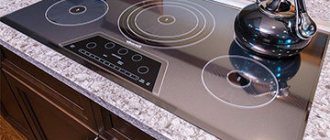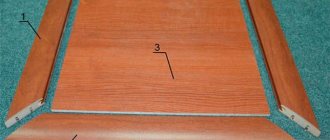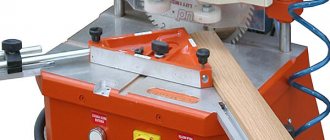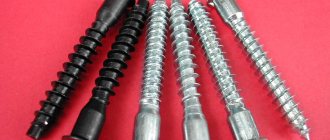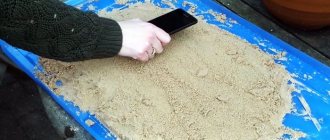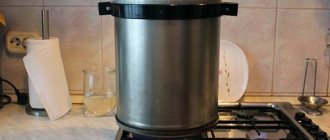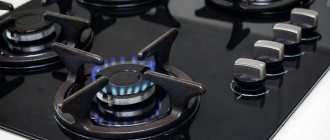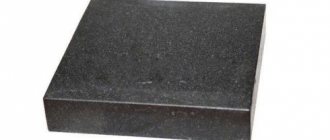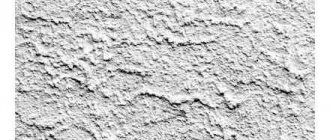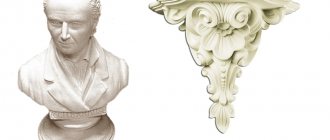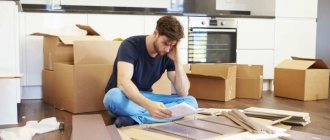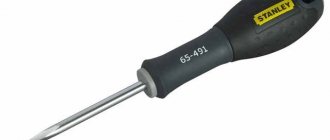High-density fiberboard, or HDF, is a wood-based panel made from wood fibers compressed under pressure and heat. HDF is available in the form of 3 or 4 mm thick boards.
HDF density is 800-1100 kg/m3. This density ensures high strength of the material, which makes it an ideal stabilizing layer for laminate and veneered parquet boards.
The Russian abbreviation HDF is a tracing paper from the English HDF (high-density fiberboard).
HDF: what is it, abbreviation, size
Everyone is familiar with the building material, which is denoted by the abbreviation MDF (finely dispersed fraction) - this is a medium-density board made from fine wood chips.
Relatively recently, the innovative material HDF or HDF (High Density Fiberboard) appeared on the construction markets. In everyday life, it has another name: “HDF sheet” - it is also a high-density fibreboard.
HDF is produced from waste that remains in sawmills. But not all waste from wood processing plants can be used, but only those that do not contain phenol-formaldehyde resins, i.e., are environmentally friendly. Therefore, in terms of environmental friendliness, this material can be compared with natural wood.
Sanitary felling wood is also suitable for HDF (this is when trees are forced to be cut down, for example, because they are in disrepair or are in the way due to their location). At the enterprise, sawdust is crushed and steamed. In this case, a binding adhesive substance (ligin) is released. Then the fibers are dried with a stream of hot air and pressed under high temperature and pressure to form panels of specified thickness and dimensions. In principle, MDF is produced in the same way.
What is the difference between HDF and MDF, fiberboard and OSB?
In fact, the differences between HDF and MDF are minimal, since these two building materials are almost identical in their properties. Perhaps their main difference, indicated by the abbreviation, is the density of the material.
HDF boards have a higher density than MDF. The density of HDF varies from 800 kg/m³ to 1000 kg/m³, while the density of MDF is much lower.
It is thanks to their high degree of density that HDF boards, which have a smaller thickness and, accordingly, weight, are not inferior in strength to thicker MDF boards.
Soundproofing
To isolate the room from sound propagated by shock transfer, the structures of the internal walls of interfloor ceilings are provided with a cushioning layer of sound-proofing material.
The porous-fibrous structure allows fluffed wood materials to act as a sound insulator.
But only those fiberboards that are called insulating are effective in absorbing impact noise. MDF and HDF are too rigid and not deformable enough to dampen the vibrational movements of the structure caused by the sound wave.
As insulation for doors
To rightfully be called a thermal insulation material, the thermal conductivity of fiberboard should not exceed 0.175 W / (m × °C). Only soft fiberboard can serve as an organic fibrous piece heat insulator - with parameters in a dry state:
- ρ avg. = 0.15–0.35 t ⁄ m3;
- thermal conductivity - 0.064–0.1 W ⁄ (m × °C).
Such products can cover a wall, ceiling, cover a floor, insulate a roof, or a loggia. Here is the installation of MDF ceiling.
Migration of formaldehyde
Medium- and high-density fiberboard is the most popular material for the manufacture of furniture, interior doors, baseboards, trim, and other items used inside residential premises. Here about the laminated MDF plinth. What solid wood cannot boast of, but which is typical for fiberboards:
- homogeneity – identical properties throughout the entire volume of the product;
- relatively light weight;
- lower heat and sound conductivity.
MDF and HDF differ from particle boards by more than half the content of synthetic resins. The concentration of formaldehyde in fiberboard, according to the domestic standard, should not exceed 8 mg ⁄ g of an absolutely dry board. But this figure significantly exceeds Western European requirements.
Chipboards have gained fame as a building material with increased toxicity. The problem with particle boards is the migration of poisonous formaldehyde gas from them. Limiting carcinogen emissions from products by state standards did not eliminate the problem.
180 domestic enterprises surveyed by the State Sanitary and Epidemiological Supervision Service and the Forest Products Certification Center produce board materials that emit formaldehyde significantly exceeding the maximum permissible values.
Domestic manufacturers of board products need to reduce the content of harmful resin, change its type, and improve production technology. In terms of formaldehyde concentration, HDF and MDF boards are not fundamentally different from each other.
The intensity of its release into the atmosphere, obviously, depends on the density of the wood-fiber material (then HDF is better than MDF). But this difference is hardly so significant that it should be taken into account as a difference between these types of fiberboard.
In sandwich panels
Fibreboards with sufficient rigidity - MDF and HDF - can serve as cladding for flat three-layer structures with a polymer core of heat and sound insulation.
Lightweight fiberboards are used as an outer layer, not for structural purposes, but for insulating multilayer products, with polyurethane foam in the middle.
Thanks to the qualities of the fibreboard (only a few millimeters thick), covering both sides with a light and fragile layer. Wall panels for interior decoration have good physical and mechanical properties. By changing the thickness of the outer layers, manufacturers vary the strength of the entire product.
In public and industrial buildings, sandwich panels are used to insulate external walls and partitions, and they are used to form suspended MDF ceilings. For residential premises, polymer material, even hidden in the casing, is not suitable: it is flammable and toxic.
An alternative to synthetics is honeycomb core (cardboard, paper). Its advantages include safety and the ability to increase the thickness of the product without adding weight.
Corrugated strips of three-layer plywood, profiled solid wood bars inside HDF sheathing are heavier than other cores, but do not impart carcinogenic properties to the product. Are the substances that bind wood fibers together harmless?
Differences between HDF boards and others
The main differences are in the technical characteristics of the plates. HDF has a high density compared to analogues, wear resistance, and several sheet thickness options. In terms of its technical characteristics, HDF can be compared to natural wood.
If you compare a sheet with fiberboard, the main differences are that fiberboard cannot withstand heavy loads and, under the same pressure, will deform, crack or break into 2 parts.
If compared with MDF, they will have different areas of application. The thickness of MDF is much larger and is 40-50 mm, while the maximum width of HDF is 6 mm.
HDF, fiberboard and MDF are used for the manufacture of different products, so it is not entirely appropriate to compare them according to their characteristics.
HDF is used more in furniture production, making doors and floors. MDF is more used for decorative work and furniture making.
Technical characteristics and material properties
HDF boards are available in 2800 x 2500 mm and 2800 x 2070 mm formats. Varnished - only in sizes 2800 x 2070 mm. Thickness can be 2.5 / 3 / 4 / 5 / 6 mm. Deviation from dimensions can be minimal for this type of product: from 0.2 to 0.5 mm. Density 800 – 1000 kg/m3.
Basic properties:
- the material is environmentally friendly, which means it is safe for health;
- has increased strength;
- horizontal surface – flat, with minimal permissible deviations.
- wear-resistant to abrasion;
- characterized by good sound insulation;
- perfectly amenable to processing, without chipping or breaking;
- resistant to aggressive substances;
- durable.
What are the differences
The difference is in density. The density of HDF is from 800 to 1000 kg/m3, and MDF is only up to 800 kg/m3. Due to the higher density, the characteristics of the materials differ slightly. HDF is stronger and more reliable. Decoding fiberboard implies other density indicators.
MDF is produced with a thickness of 6 mm, and HDF can be much thinner - 2 mm, 3 mm, 4 mm (up to 8 mm). In terms of performance, HDF boards are very close to natural wood, although their price is more than half the price. The differences between MDF and laminated chipboard are approximately the same, but the latter also has a different top coating.
What MDF plinth looks like before painting is indicated in this article.
Types of HDF
Polished slabs. Produced by hot pressing of wood pulp. In appearance they are very similar to MDF boards, the only difference is in density. The compressed material is not initially processed in any way. In further use, it is coated with varnish and paint.
Decorated slabs (their second name is “varnished”). The base is polished products, which are additionally coated with primer paint, then they are given texture and a base color. Using certain rollers, you can imitate the texture of different woods. It turns out to be an ideal material for furniture. This is the industry that uses it the most. Although decorative HDF boards are also ideal for interior doors. You can learn in detail about what MDF panels for walls are from our article.
HDF boards are well coated with almost all common paints. This can be done at home with a roller or brush, but on an industrial scale they use various paint and varnish systems.
Application
The material is well suited for veneering and lamination. Due to its excellent characteristics, it is widely used in various fields:
- Furniture industry. To reduce the cost of products, hidden parts of structures are made of HDF (bottoms of drawers, back walls of cabinets, etc.). The material is adjusted to the standard size of kitchen countertops from other samples. The material is also used under natural veneer. Perforated HDF panels are also popular in the furniture business (inserts in upholstered and cabinet furniture, trade and exhibition equipment, partitions, etc.).
- Repair of premises and construction. HDF is used for flooring (subfloor and not only), as a base for laminate and parquet. These thin slabs are easy to cover, level walls, and hide communications and ventilation behind them. They are often used for suspended ceilings.
- Car manufacturing. It is used for interior decoration of train cars and trams.
- Production of exhibition stands (wall elements, partitions).
- Making doors. HDF board is suitable for making door panels.
- Other: picture frames, trade stands, decorative elements, car interior lining, etc.
Advantages compared to some other materials
From the very name of the material it is clear that it is denser, harder and stronger than other similar plates. Here are a few more of its advantages:
- HDF is environmentally friendly, because there are no chemical additives in its production. Wood fibers contain the natural component ligin. At high temperatures it melts, producing an organic glue that binds the fibers into a dense layer. It turns out that the naturalness of HDF is very close to solid wood. But the structure of the slab is homogeneous, without compactions and voids, which happens in natural boards.
- Same sizes. After all, the thickness and horizontalness of the same plywood can be different in one sheet.
- The material is easy to process. It can be sawed, drilled, cut. Chips and cracks do not form.
- Affordable price. The cost of HDF is less than the price of natural wood.
Use in the kitchen
Kitchen wall panels that imitate stone or tile are made from HDF boards. They serve as excellent wall decor and are also suitable for kitchen aprons.
Wall finishing is possible without guides, but in each specific case you need to consult with a specialist. Sometimes lathing is required for the installation of sheets to avoid sagging and bending during operation.
Boards that imitate wood: chipboard, fibreboard, MDF, OSB - how not to get confused
If you are planning to buy and build a house, you will probably encounter the need to use wood boards at the finishing stage.
In short, their fundamental idea is to replace conventional natural wood through the use of substances (for example, synthetic resins) that are designed to combat the negative natural factors of wood as a building material: rotting, cracking, and insect attack.
The result is products with high performance characteristics.
Boards that imitate wood are widely in demand in construction and repair and finishing work due to the fact that they are available in various sizes, are simpler and more convenient to work with, and are also more attractive in terms of cost than logs and boards.
At the same time, there are many types of such wood boards - of course, they are manufactured using different technologies, have differences in structure, properties and purpose.
In this review we will look at the most popular materials, and you will no longer be afraid of 3-letter abbreviations - chipboard, fibreboard, MDF, OSB -
which can often be found in advertisements for construction services.
Let’s make a reservation that all wood boards can be divided into two fundamental classes: particle boards
and
fibrous
- belonging to one of these groups is inherent in the names of the materials themselves.
MDF
Medium Density Fiberboard
(from the English phrase Medium Density Fiberboard, MDF).
This is like an improved continuation of fiberboard; in MDF boards, the fibrous mass is not just “glued together”, but forms an inextricable connection. The quality of grinding of the raw materials ensures that the slabs are strong and smooth. MDF panels are durable, moisture resistant, do not fade in the sun and do not absorb dirt.
Variety of colors
The HDF material is characterized by good horizontality and high performance characteristics. Lacquered panels look stylish and attractive, as they can have a variety of colors: they come in white, black, gray and other colors. In addition, the HDF surface can be painted wenge, maple, beech and metallic. Manufacturers sell the following types of sheets of colored perforated panels: hilt, gloria, veron, city, techno.
HDF production
You can find information on the Internet: density of 3 mm HDF sheets for flooring with photos, their features, production technology, etc. HDF-based laminate is strong and durable. The material for making the base is technological chips. All materials are PEFC certified.
Unlike chipboard, which uses adhesive to hold the fibers in place, laminated HDF floorboards are made with resins. This is safer for health and ensures high strength of the material.
Manufacturing is carried out in several stages:
- Steam treatment. The shavings are carefully crushed, washed, and then treated with high-temperature steam to break them into fibers. Hard wood after such treatment turns into a substance resembling glue. The fibers are easily separated from each other.
- Grinding in a refiner. After steaming, the wood is placed in a special unwinding device. The output is a hot, homogeneous mass.
- Adding hardener and binder. Special resins are added to the finished substance, which bind individual fibers, and then a hardener to obtain a durable material.
- Drying and removing foreign particles. In order for the material to be pressed well, it is dried to a moisture content of 8-15%, and then foreign particles and larger lumps are removed using a special device.
- Formation of the carpet. The finished mass is leveled and formed in such a way that all voids are filled. A cold pressing technique is then used to remove air between the wood fibers.
- Trimming. The edge is cut and the slab is leveled. At the same stage, quality control is carried out in order to send the trimmings back for processing.
- Pressing. At this stage, the plate is formed using a press for more durable gluing of the fibers.
- Cooling. The cooling stage of the slab can last up to 3 days. During this time it completely hardens.
- Treatment. The finished product is polished and packaged in this form. But most often additional processing is carried out, which consists of varnishing and lamination.
The dimensional stability of HDF boards and high strength are the main advantages of the material.
Decorative finishing of fibreboards
Coatings protect the slabs from moisture and abrasion:
- enamel. The products become the most moisture-resistant, suitable for cladding the walls of grocery stores and medical institutions. Here about moisture-resistant MDF;
- polymer films for rooms with high humidity in the bathroom and kitchen. Here about bathroom furniture;
Covered with polymer film
- paper impregnated with resins;
- paint - water-based polyvinyl acetate;
Abrasion of the varnish film occurs to a greater extent on the inside of furniture made of MDF and HDF.
Microclimatic factors (mainly the difference in humidity that accompanies the change of seasons) affect wear and tear 3–4 times less than the use of the contents of cabinets and chests of drawers.
However, the coating on the back side of furniture is thinner than on the front side. Lamination of slabs with synthetic film is carried out on textured paper that imitates the cut of solid wood of a valuable species. This is how laminated wall panels are made.
Is the type of wood important in fiberboard?
The microstructure of coniferous and deciduous wood is different. Thus, only deciduous trees have tubes running along the trunk - vessels through which moisture rises from the roots to the crown. But in the trunks of coniferous trees there are intercellular spaces filled with resin (resin passages). The properties of specific breeds also vary.
The performance of most wood composites depends on the properties of the wood from which they are made. For example, the density of chipboard, poplar plywood is 450 kg/m3, birch is 650, and coniferous plywood is 550. Paulownia plywood is 1.7 times lighter than birch plywood.
The properties of products made from wood separated into fibers retain a connection with the species, but less significant. The macrostructure of the initial solid raw material has a weaker effect on the quality indicators of MDF and HDF.
It has been experimentally established that slabs made from coniferous tree fibers are the most durable. The reason for this is the peculiarities of the fractional composition of wood pulp and the shape of the particles. As for specific hardwoods, birch MDF and HDF are stronger than others, alder and aspen are “weaker”.
The inclusion of deciduous wood in the raw composition of a building material is fraught with a decrease in its physical and mechanical characteristics. Density and swelling are almost not affected, and the bending strength is reduced.
Product characteristics
Standard sizes of HDF sheet:
Naturally, panels intended for decoration or finishing are pre-cut into elements of the required format.
Distinctive properties of the products:
These characteristics are reinforced by subsequent processing if the product is used for decorative purposes.
It is on the basis of HDF that the best models of laminate flooring are made
Application
Durable sheet material is used in interior decoration. Wood-fiber panels are used in the formation of surfaces of floors, walls, ceilings, in the manufacture of kitchen aprons, panels, accent walls and interior doors. Furniture parts are made from sheets.
Floors
During major renovations of residential premises, the question often arises of how to lay new flooring without dismantling the old wooden floorboards. The problem is solved as follows.
- Wooden floors are leveled with putty. Damaged areas are replaced with new boards.
- The floors are covered with roll waterproofing.
- HDF sheets are laid on top of the film. The seams between the sheets are puttied.
- The slabs are fastened to the old coating using screws. Recesses are made under the fastener heads so that the heads of the screws do not protrude above the surface of the fiberboard.
- After this, they begin installing the flooring (linoleum, carpet, laminated parquet).
It is better to choose the thickness of the HDF subfloor in the range from 4 mm to 6 mm. Sheets can be used to level concrete floors. HDF panels have good thermal insulation properties. They are used as the basis for heated floors.
Walls
Sanded panels are used to cover walls in service rooms or corridors. Sheets cover vertical fences to the full height or make a border. The cladding is carried out in several stages.
- The walls are leveled with cement mortar and putty.
- Install the sheathing. A wooden beam 40x40 mm or a metal profile for plasterboard is used.
- HDF sheets are cut into fragments so that the joining seams between the panels are located exactly in the middle of the beam or metal profile.
- If necessary, the openings of the sheathing are filled with insulation.
- The sheets are secured with self-tapping screws using a screwdriver.
- The joining seams are puttied. Sometimes the vertical junctions are covered with decorative strips.
- The surface of the cladding is covered with wallpaper, varnished or painted.
- Horizontal junctions of sheets to the ceiling and floor are covered with cornices and plinths.
HDF tiles with imitation stone or valuable wood are attached to the sheathing with small nails.
Partitions
Unlike plasterboard, partitions made from HDF panels are very durable and do not vibrate. The construction of the walls is carried out as follows:
- Guides made of wooden beams 40x40 mm or 50x50 mm are fixed to the ceiling and floor. It is held by metal corners, which are attached to the beam with screws, and to the floor and ceiling with dowels.
- Then vertical posts and cross braces from the same timber are installed.
- The sheathing is covered with HDF sheets.
- Stringers are inserted into the partition opening and the door is hung.
- The junctions between the walls and the floor and ceiling are covered with cornices and baseboards.
- The surface of the partition is primed, covered with wallpaper or finished with other materials.
Ceiling
Suspended ceilings are made from HDF panels. For this, thin polished panels with a thickness of no more than 2.5 mm are used.
The technology for covering ceilings with HDF boards is the same as for finishing walls. Hanging surfaces are painted or covered with wallpaper.
Kitchen apron
The vertical surface between the work table and wall cabinets is often subject to contamination during food processing. To protect the wall, it is covered with an apron.
To make such a panel, LDHF sheets are used (laminated aprons with drawings or photo printing). The protective coating of the panel does not fade or fade under the influence of ultraviolet rays. The surface is easily washed from any dirt.
Panels and accent walls
LDHF panels are used as panels and accent walls. A panel differs from an accent in that it occupies almost the entire surface of the wall, and the decorative wall can be small in size.
Like backsplashes, these panels are printed with various designs, patterns or photographs. In special workshops you can order any image.
Interior doors
Door leaves made from HDF panels are lightweight compared to wooden or plastic doors. Making such doors yourself is quite easy:
- a frame with a cross member is assembled from timber 40x40 mm or 50x50 mm;
- the frame must match the dimensions of the doorway;
- it is sheathed on both sides with HDF sheets;
- the upper part is sometimes glassed;
- hinged loops are attached to the stringer and frame;
- install door handles;
- the surface of the door is primed and subjected to finishing;
- doors are hung on hinges in the opening.
Tips for care and use
HDF boards come in different qualities. Models from well-known manufacturers with a powerful protective coating do not require special care. It is better to remove all dirt fresh, when the dirt, soot or grease has not yet had time to dry. After each cooking, when cleaning the kitchen, simply wipe the panels with a sponge or cloth soaked in soapy water.
If it happens that the stains on the apron are old and dry, do not use aggressive detergents or abrasive substances to remove them. It is better to use special chemical compounds to remove such defects.
To ensure that the panels last as long as possible while maintaining their original appearance, follow these simple tips:
- Try to always keep the surface of the walls clean. After each meal, take a few minutes to clean so you don't have to spend half a day doing it later.
- heating appliances such as an electric kettle, coffee maker, oven or gas stove https://gaz-dostavka.kz at a safe distance from the walls.
- Do not clean the slabs with steel wool or a knife. The maximum that is allowed for old stains is to gently wipe them off with the felt side of a dishwashing sponge using non-aggressive household chemicals.
- Be careful with your finishing. Do not test the strength of the panels with heavy objects or tools. Even the most practical material can be damaged if done intentionally.
Installation of a kitchen apron made of HDF panel, care features
If we talk about the method of fastening, then everything is extremely simple. HDF panels can be installed on an aluminum profile or a wooden frame. Liquid nails can serve as fastening to the wall. Installation is carried out in the same way as installing plastic or MDF panels.
It is important to note that you can use self-tapping screws or nails to attach a kitchen apron to the wall only if the surface is perfectly smooth and has been treated with a special antifungal solution.
To reliably install HDF panels, you must first build a frame, and only then fasten the board itself, using, for example, self-tapping screws.
Caring for a kitchen apron made of HDF does not require much effort. It is enough to wipe it with a damp cloth or cloth; use high-quality household products for cleaning. The panel is quite resistant to mechanical damage, so it is not “afraid” of various powder products or in the form of gel and cream. Using abrasive sponges may cause scratches.
With proper and careful care, kitchen aprons made of HDF can last for a long time without losing excellent performance characteristics.
Advantages and disadvantages
Advantages:
- environmental friendliness. The finishing material contains lignin (a natural component) as an adhesive agent.
- strength. Stronger than MDF, as it is denser, up to 1000 kg/m3
- moisture resistance. Basically, laminated and additionally coated panels have this property. Such HDF panels are well suited as aprons in the kitchen.
- make it possible to further process the panels to increase their attractiveness with subsequent decoration.
- easy to process (cuts, saws, drills easily). Mainly due to its homogeneity
Flaws
- more expensive than MDF
- afraid of strong mechanical impact
- without additional processing it is afraid of moisture
Application technology Before choosing this finishing material, you need to decide why you are buying it. As a subfloor this is one thing, for lining heating radiators this is another, as an apron for the kitchen this is a third, and so on. In this case, special attention should be paid to the thickness of the panels. The next selection criterion is quality; buy only from time-tested manufacturers; they also have a certificate of conformity. The panels can also be coated with a special varnishing compound for durability. Such panels will look much better than regular ones. It is advisable to buy HDF from European manufacturers; they have better quality control. If the finishing material (HDF) will be used in an environment with high humidity, then it is better to choose the laminated option.
First of all, you need to choose high-quality finishing materials, smooth, without chips, etc., so that later you don’t blame the quality of the finish if you want to buy. Then it is of great importance where you mount the HDF panels; the method of fastening and the tool, that is, the finishing technology, actually, depends on this. There are two installation methods for this finishing material:
- on the sheathing. They are attached to a frame made of wooden slats, pre-treated with olive oil and dried, using self-tapping screws. The composition of the tools is the same as for installing MDF. Used if the walls cannot be leveled or you simply don’t want to
- for glue (liquid nails). This option is ideal for a flat wall. The wall is cleaned of dust, sanded with sandpaper, glue is applied to the HDF panel, pressed against the wall with little force and tapped with a special tool, namely a rubber hammer. The joints must be treated with sealant, which will protect against moisture penetration.
Advantages compared to some other materials
From the very name of the material it is clear that it is denser, harder and stronger than other similar plates. Here are a few more of its advantages:
- HDF is environmentally friendly, because there are no chemical additives in its production. Wood fibers contain the natural component ligin. At high temperatures it melts, producing an organic glue that binds the fibers into a dense layer. It turns out that the naturalness of HDF is very close to solid wood. But the structure of the slab is homogeneous, without compactions and voids, which happens in natural boards.
- Same sizes. After all, the thickness and horizontalness of the same plywood can be different in one sheet.
- The material is easy to process. It can be sawed, drilled, cut. Chips and cracks do not form.
- Affordable price. The cost of HDF is less than the price of natural wood.
What are MDF panels for?
One of the most beautiful options, varied in color, is MDF panels. They consist of crushed pressed sawdust and a special binder. The material is used for installation on interior walls, floors, ceilings, and is often decorated to look like natural wood, but is much cheaper.
Interesting materials:
How to register a site in Google Analytics? How to register on LinkedIn in Russia? How do I register for GeForce Experience? How to register in the school diary? How to register with Smule? How to charge the Jet Sport fitness bracelet? How to charge talisman stones? How to charge the speaker via USB? How to charge the JBL Boombox speaker? How to charge the jbl charge speaker?
Manufacturing of fiberboard
Main components of fiberboard:
- binders - polymer or mineral.
The slabs are formed after fluffing the wood to a fiber state. Such fine mechanical grinding is not possible without first cutting and softening the wood (with hot water or steam).
Fluffing is one of the ways of porousization of a material (that is, the inclusion of very small voids evenly distributed throughout the volume into its body). Relatively dense raw materials (sawdust, shavings, wood chips, slabs) after fluffing become fibrous material.
Forming of products begins with mixing a mass of wood fibers with water and additives (fire retardants, antiseptics, water repellents). The raw material suspended in water is poured onto the fine copper mesh of the casting machine.
After the water is filtered (this process is accelerated by a vacuum unit), a carpet of wet fiber remains on the mesh.
The next stage of board production is different for light fiberboard, MDF and HDF:
- to create a soft, low-strength, highly porous slab, the fiber is only dried (in a roller dryer);
- the result of compaction on a hot press (t = 150–165 °C, p = 1–5 MPa) is a fine-fiber material and, at the same time, hard and durable: medium- and high-density fiberboard.
The difference in density and physicochemical properties of solid slabs is achieved by changing the hot pressing time. Soft and semi-hard slabs are lightly pressed, and final drying occurs without compaction.
The same mass, completely dried under high pressure, becomes a solid finishing fiberboard. When making superhard slabs, the suspension is enriched with phenol-formaldehyde polymer (synthetic resin) before dehydration.
Which material is better
It is impossible to say unequivocally which is better - HDF or fiberboard. Because fibreboards combine HDF, MDF and LDF boards. They have different purposes, and therefore there is no choice between them. Areas of application of materials:
In the furniture industry, high-density boards are used for the production of facades. For this purpose, MDF boards are also used, made with the addition of binding components that increase the strength of the material. But only thin sheets of medium-density fiberboard are used as the back wall. You can order them inexpensively from us with delivery throughout Moscow and Moscow Region.
Source
Types of fiberboard produced
The mechanical and performance qualities of wood composites significantly depend on their density (ρ). The greater the weight per unit volume, the higher the strength and rigidity of the material.
Depending on density, hardness and weight, wood fiber boards are divided into types by state authorities and manufacturers - if they rely on technical specifications when producing products.
The most common gradation is:
- light fiberboards are those boards whose density does not exceed 500 kg ⁄ m3. They are divided into semi-hard (ρ = 400–500 kg ⁄ m3) and soft (ρ 950 (hdf).
In Austria, fibreboards have been developed and are awaiting the start of industrial production, the density of which changes in waves in volume. The strength of such plates is higher than that of homogeneous products with the same thickness and average density (and, accordingly, the same weight).
From hard slabs:
- form partitions;
- they hem the ceilings. Here is about finishing the MDF ceiling;
- lay floors;
- make doors;
- built-in furniture.
Walls and ceilings are lined with finishing products.
Insulating fibreboards form a heat- and sound-insulating layer of walls and ceilings, and an underlying layer in the floor structure.
These are soft and semi-hard, with the lowest bending strength of the slab. The use of insulating fiberboards is especially widespread in prefabricated panel construction.
Which slabs should I choose?
Which is better: fiberboard or HDF depends on the purpose of using the panels and the requirements for their operation. If strength and stability are your main requirement, then High Strength Board (HDF) is better suited for your application. Fiberboard can be used for cladding rooms for insulation and sound insulation, floor lining, packaging and the interior of furniture.
In the group you can purchase both of these types of fiberboards. For production, we use exclusively high-quality raw materials and guarantee the high reliability of our products.
Source
